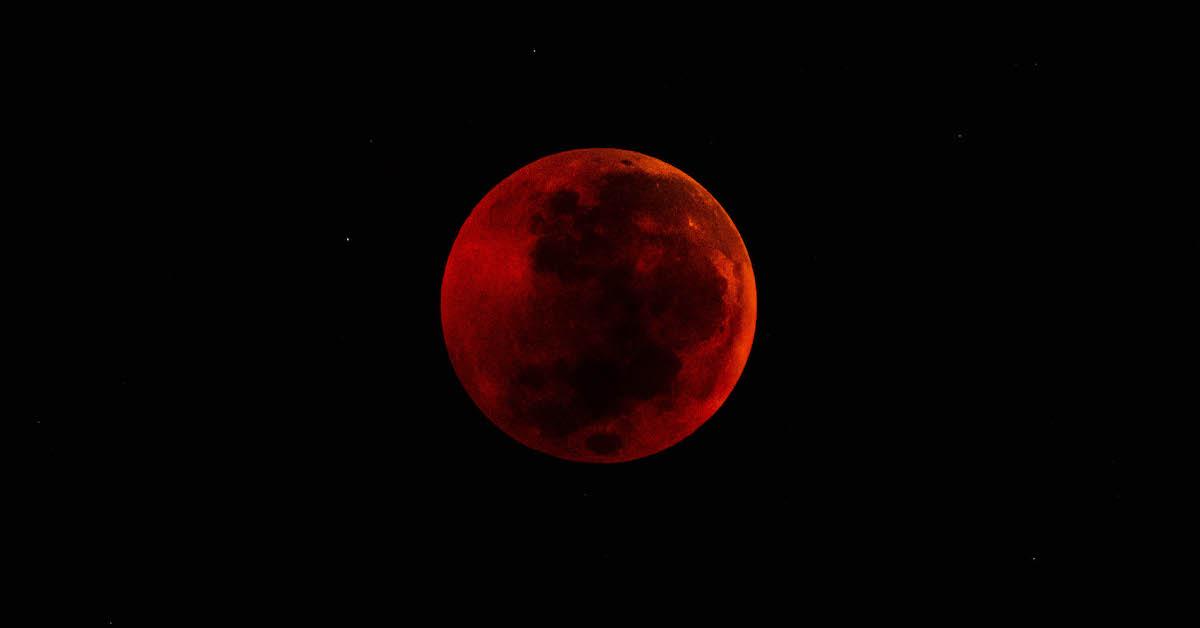How to Watch May's Total Lunar Eclipse, aka the "Blood Moon"
Published May 9 2022, 2:07 p.m. ET

The Total Lunar Eclipse of the Moon is seen on May 26, 2021 in Auckland, New Zealand.
May 2022’s full moon is going to be a good one. Assuming there is clear weather, people in various countries all across the globe will be able to see the 2022 Blood Moon in total lunar eclipse on the night of May 15. If you fancy a late-night celestial adventure this month, keep reading for the details on the upcoming total lunar eclipse.
What is a Blood Moon? May’s Flower Moon will appear red due to a total lunar eclipse.
According to The Old Farmer's Almanac, Blood Moon is a nickname for a total lunar eclipse, because during this celestial event, the moon appears reddish. May’s full moon is typically called the Flower Moon, but this month, it will be a delightful Blood Moon, too.
What is a total lunar eclipse? What about a penumbral lunar eclipse?

A view full moon during a “Blood Moon” eclipse on July 28, 2018 in Yogyakarta, Indonesia.
A total lunar eclipse, as defined by Time and Date, is when the Earth finds itself right between the moon and the sun, and the Earth’s shadow totally covers the moon, resulting in the moon appearing reddish. The moon will be at its reddest when the eclipse hits totality.
Many areas on Earth will be able to see the Blood Moon during the total lunar eclipse in mid-May. However, other areas will instead see a penumbral lunar eclipse, which is much harder to see, and simply appears as dark shadows covering the moon, according to EarthSky.
But when exactly will you be able to see the Blood Moon? Here’s everything you need to know.
When is the next Blood Moon in 2022? How to watch the total lunar eclipse:
On the night of Sunday, May 15 going into Monday, May 16, 2022, you may be able to see the Blood Moon in total lunar eclipse. According to Live Science, people in the Americas, parts of Africa, Antarctica, and Europe will be able to see the Blood Moon in its fully eclipsed moon phase.
This total lunar eclipse will be pretty easy to see, even from your very own backyard — unlike solar eclipses, total lunar eclipses can be seen without being in the path of totality. Additionally, no special glasses or devices are necessary, though a telescope or binoculars could make the experience more exciting, as suggested by Space.com.
The website notes that the celestial event will begin at 10:10 p.m. ET on May 15, and continue for the following 3.5 hours. NASA adds that the best time to view the total lunar eclipse will be at 12:12 a.m. ET on May 16, as that is when totality will occur.
If you live in North America, this is definitely not one to skip, as it will be the only lunar eclipse you can see this year; otherwise, there will be one other lunar eclipse later in the year (in November), but it will not be visible from North America, as per Live Science.
That being said, if you live in Eastern Europe, the Middle East, and New Zealand, you will only be able to catch the penumbral eclipse instead. As mentioned above, this is a far less exciting astronomical event — but since you will likely be able to see it from your own backyard, you may as well head outside and hope for a glimpse.
Additionally, there will be a few livestreams of the total lunar eclipse on the night of May 15. For instance, NASA already has a YouTube livestream up and running, which will start streaming on May 15 at 9:32 p.m. ET.
When was the last Blood Moon?
According to Forbes, the last Blood Moon occurred on the night of Nov. 18 going into Nov. 19, 2021. However, November's Blood Moon was only a partial lunar eclipse — so May's is expected to be much more exciting.